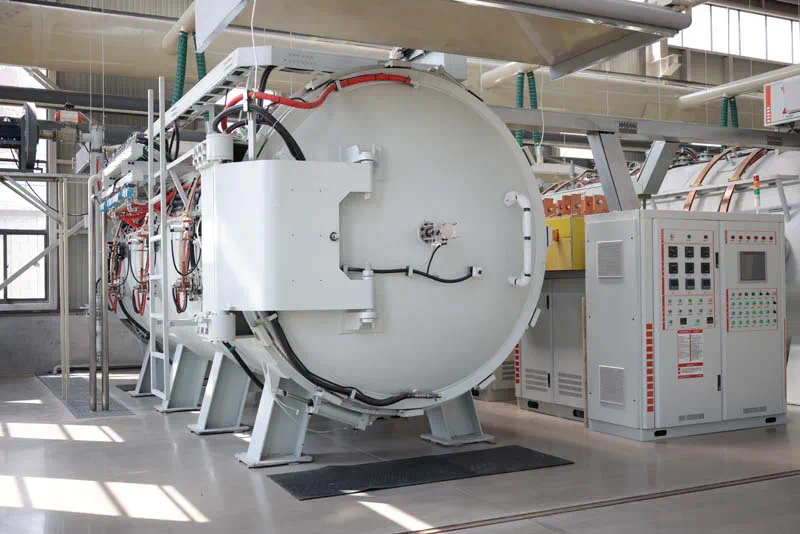The Future of Silicon Carbide in Industrial Heating Technologies
Silicon carbide (SiC) has emerged as a pivotal material in various industrial applications, particularly in heating technologies. With its exceptional thermal conductivity, high-temperature stability, and robustness, SiC is poised to revolutionize the way industries approach heating processes. This article aims to explore the future of silicon carbide in industrial heating technologies, examining its advantages, applications, challenges, and the ongoing innovations that are shaping its trajectory.
Understanding Silicon Carbide
Silicon carbide is a compound semiconductor composed of silicon and carbon. It possesses unique properties, such as a high melting point (approximately 2,700 degrees Celsius), excellent thermal conductivity, and resistance to chemical corrosion. These characteristics make SiC an ideal candidate for high-temperature applications, particularly in environments where conventional materials fail.
The growth of SiC has been driven by several factors, including the increasing demand for energy efficiency, the need for sustainable solutions, and advancements in manufacturing technologies. As industries seek to optimize their heating processes, SiC stands out as a promising alternative to traditional materials like metals and ceramics.
Advantages of Silicon Carbide in Heating Technologies
One of the most significant benefits of silicon carbide in industrial heating technologies is its high thermal efficiency. SiC can operate at elevated temperatures without losing performance, allowing for faster heating times and reduced energy consumption. This efficiency is crucial in sectors such as aerospace, automotive, and electronics, where precision and reliability are paramount.

Moreover, the ability of SiC to withstand harsh environments without degrading makes it suitable for applications involving corrosive substances or extreme conditions. This durability not only extends the lifespan of heating equipment but also minimizes maintenance costs and downtime.
Another advantage is SiC’s lightweight nature compared to traditional materials. This characteristic facilitates easier handling and installation, which can lead to streamlined production processes. Additionally, the integration of SiC components can result in more compact designs, allowing for improved space utilization in industrial settings.
Applications of Silicon Carbide in Industrial Heating
Silicon carbide is being increasingly adopted in various industrial heating applications due to its beneficial properties. One prominent application is in electric heating elements. SiC heating elements are gaining popularity in furnaces and kilns due to their ability to operate at high temperatures while maintaining uniform heat distribution. This uniformity is critical for processes such as sintering, casting, and annealing, where temperature consistency directly influences the quality of the end product.
In the semiconductor industry, SiC is utilized in high-temperature processing equipment. The ability to achieve precise temperature control is essential for manufacturing semiconductor devices, and SiC’s thermal stability ensures reliable performance throughout the processing cycles.

Furthermore, the automotive sector is witnessing a surge in SiC integration, particularly in electric vehicles (EVs). SiC components are used in power electronics for EV charging systems and thermal management applications, contributing to enhanced energy efficiency and performance.
Challenges Facing Silicon Carbide Adoption
Despite its numerous advantages, the widespread adoption of silicon carbide in industrial heating technologies is not without challenges. One of the primary hurdles is the cost associated with SiC production. The manufacturing process for silicon carbide is complex and often more expensive than traditional materials. This cost factor can deter companies from making the transition, especially those operating on tight budgets.
Additionally, while SiC offers high performance, the technology is still relatively new, and there may be a learning curve associated with its implementation. Industries must invest in training and development to ensure that personnel are equipped to handle SiC materials effectively.
Another challenge lies in the scalability of SiC manufacturing. While advancements are being made, scaling production to meet the growing demand remains a concern. Companies must ensure that supply chains can support increased SiC material availability without compromising quality.
Innovations Shaping the Future of Silicon Carbide
As the demand for silicon carbide continues to rise, innovations in manufacturing processes and material design are emerging to address existing challenges. Researchers are exploring new methods for synthesizing SiC that could potentially reduce production costs and enhance material properties. Techniques such as additive manufacturing and advanced crystal growth methods are being investigated to improve the efficiency and scalability of SiC production.
Moreover, ongoing research is focused on enhancing the electrical and thermal conductivity of SiC. By optimizing the doping process and refining material structures, scientists aim to improve SiC’s performance in high-power applications, making it even more attractive for industries reliant on efficient heating technologies.
The development of hybrid systems that combine SiC with other materials is also gaining traction. These hybrid solutions leverage the strengths of different materials to create more efficient and versatile heating systems. Such innovations could pave the way for new applications in sectors previously dominated by traditional heating technologies.
Looking Ahead: The Role of Silicon Carbide in Sustainable Heating Solutions
As industries increasingly prioritize sustainability, silicon carbide is well-positioned to play a crucial role in achieving energy efficiency goals. The inherent properties of SiC allow for reduced energy consumption and lower emissions in heating processes, aligning with global initiatives aimed at reducing carbon footprints.
In the quest for greener technologies, SiC can facilitate the transition to renewable energy sources. For instance, its application in solar thermal systems can enhance energy capture and storage, contributing to more efficient energy utilization. Furthermore, the integration of SiC in electric vehicle infrastructure supports the shift towards sustainable transportation solutions.
Conclusion
The future of silicon carbide in industrial heating technologies is bright, characterized by its potential to enhance efficiency, durability, and sustainability. While challenges remain, ongoing innovations and a growing understanding of SiC’s capabilities will likely overcome these barriers. silicon carbide rod heater As industries continue to evolve and adapt to new demands, silicon carbide will undoubtedly play a significant role in shaping the next generation of heating technologies, driving progress toward a more sustainable and efficient future.
https://iflatiron.com/




